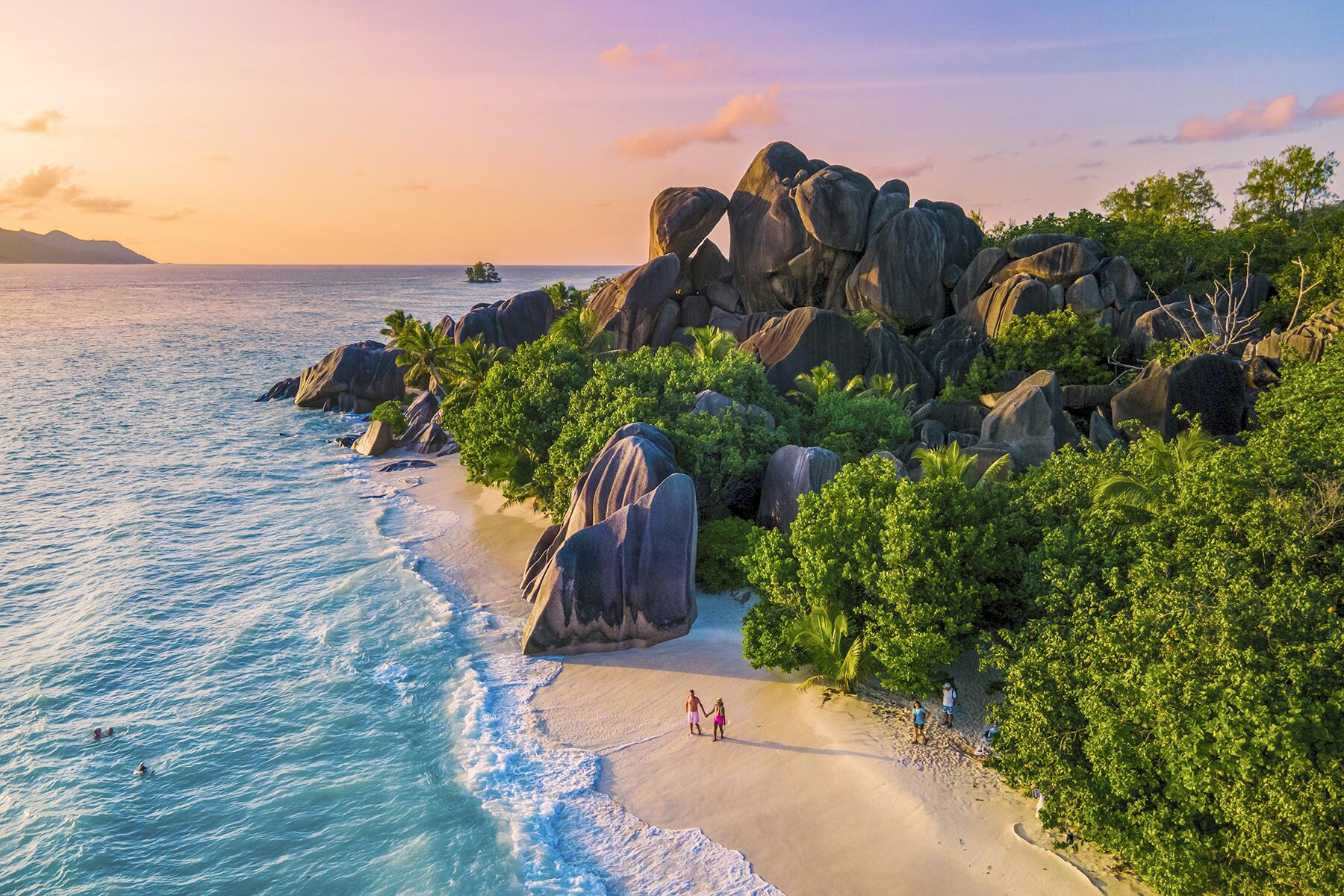Witness what some call the most spectacular show on earth.
Whales can be found in all the oceans of the world but for those who’ve long dreamt of laying eyes on them, Los Cabos offers a unique vantage point to embark on a scenic whale-watching pub crawl of sorts. Located at the southern tip of the Baja California Peninsula, where the Sea of Cortez meets the Pacific Ocean, the biodiverse waters there transform into a spectacular theater during the whale migration season between December and April.
Zodiac boats, luxury yachts, double-deck catamarans, or even glass bottom boats can whisk you off to cavort with humpbacks, fins, sperms, grays, and blues during private expeditions or group tours around Cabo. You’ll head to locales like the much-photographed terracotta-colored rock formation known as Land’s End (El Arco), spending anywhere from three hours to two days getting up close and personal with these awe-inspiring cetaceans whose presence often moves first-time onlookers to tears.
All whales produce sounds from the larynx, and many species, such as bowheads and blues, communicate through singing. Luckily, many tour operators in Los Cabos bring along hydrophones (underwater microphones) for passengers to be able to listen to the mesmerizing, mildly haunting whale song. Marine biologists might also come along for the ride, making for an educational, extraordinary, and unforgettable day out on the water. Here are the top things to know about whale-watching in Los Cabos.
Recommended Fodor’s Video
The Best Time of Year to See Whales in Los Cabos
SEMARNAT, Mexico’s Secretariat of Environment and Natural Resources, determines the exact dates. However, the whale-watching season in Los Cabos runs from December to April. During these months, whales migrate from the cold northern waters around Alaska to the warmer waters of the Baja Peninsula to mate and give birth. The peak of the season, when sightings are most frequent, typically occurs between January and March. To see one of the most spectacular wildlife shows on earth, book your Cabo trip for this period.
The Types of Whales in Los Cabos
Dominating the scene, humpback whales are a common sight as around 10,000 of these majestic beings make their annual migration to the waters of Los Cabos. Named after the distinctive hump on their backs, they delight whale watchers with their energetic displays, frequently leaping from the sea and striking the water’s surface with their tails or pectoral fins.
The cast of marine giants during Cabo whale-watching tours also includes blue whales (the largest animal on the planet), alongside gray, Bryde’s, fin, and sperm whales.

The Best Whale Watching Spots in Los Cabos
You are guaranteed a dramatic backdrop while whale-watching in Cabo San Lucas Bay, close to the iconic El Arco, where a sea lion colony resides. Many tours frequent this area and Médano Beach, departing from the marina in Cabo San Lucas.
For a more serene experience, the San José del Cabo Estuary provides a peaceful backdrop for observing whales. This ecologically rich area is also a birding hotspot as hundreds of migrating bird species use it as a resting and feeding ground during their extended journeys between North and South America.
Some 240 miles off Baja California’s southern tip, the Revillagigedo Archipelago is a quartet of islands that offers divers unparalleled encounters with the ocean’s giants: giant manta rays, sharks, and whales. The archipelago—the largest fully protected marine reserve in Mexico—is extremely isolated, which further adds to its allure, and it’s a bucket list destination for experienced, adrenaline-seeking, in-the-know divers. The islands—Clarion, San Benedicto, Roca Partida, and Socorro—have been UNESCO-listed since 2016, and you can get there (in around 24 hours) on a liveaboard with companies like Nautilus Belle Amie, Solmar V, and Cantamar Liveaboards that depart from San José del Cabo or Cabo San Lucas.
If you’re traveling on a budget or you are unsure of booking a bespoke boat trip for whale spotting, there are plenty of places where you can catch sight of them on dry land, free of charge. Whales are often seen breaching near the shore along the Tourist Corridor, the 20-mile stretch between Cabo San Lucas and San José del Cabo. From the pool or the comfort of your resort sun lounger, you might spot them at Montage Los Cabos or The Rooftop, an elegant sunset lounge at The Cape, a Thompson Hotel is also a prime peeking spot.
The Best Time of Day to See Whales in Los Cabos
The optimum time to book a whale-watching tour depends on the type of experience you’re after. Anyone prone to seasickness should book an early morning trip when the waters are calmer and less choppy. Travelers with young children may also prefer this time as the boat ride will be smoother with less wind.
During mid-day tours, there is more whale activity, and guides have typically sussed out where to spot whales by that time, so you are more likely to view them.
Afternoon outings are the most theatrical, with increased wind, waves, and higher tides but also heightened whale activity, making the bumpier ride worth it.

How to Book a Whale-Watching Tour in Los Cabos
Going on a whale-watching tour while vacationing in Los Cabos is a way to contribute to the local economy, as marine tourism alone supports roughly 2,000 people in Baja California Sur.
To book a tour in Cabo San Lucas, you can walk to the marina and make reservations in person with one of the many operators there. At Marina Puerto Los Cabos in San José del Cabo, make inquiries at Salty Cabo Excursions, East Cape Explorers, or Fish Out of Water Tours. Always be sure to go with a reputable company that upholds whale-watching standards and regulations. Each season, SEMARNAT issues certified tour operators with a whale-watching flag, which should be visible at all times while out at sea. Look out for this on your boat to ensure your provider is licensed.
Some established, well-respected, and widely reviewed Los Cabos whale-watching tour operators where you can make advanced reservations include Whale Watch Cabo , Cabo Trek, Cabo Adventures, Wild Cabo Tours, or Sun Rider Tours, which offers lunch or dinner whale-watching cruises. Prices for these immersive tours in Los Cabos range from $60 to $600, varying by the privacy and exclusivity of the experience, the vessel, and the trip’s duration.
When booking, look out for perks like photography packages, meals and drinks included in the rate, hydrophone usage, and whale sighting guarantees. Additionally, the presence of informed guides and marine biologists onboard significantly enhances the experience by offering insights into the lives of the creatures you’re there to admire.



